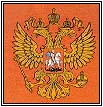 These
works are presented not as an exhaustive listing, but as a representative
sampling of some of the most important trends in English-language scholarship
on Catherinian Russia. Each of these works contains an extensive bibliography
that should be carefully reviewed for further readings.
These
works are presented not as an exhaustive listing, but as a representative
sampling of some of the most important trends in English-language scholarship
on Catherinian Russia. Each of these works contains an extensive bibliography
that should be carefully reviewed for further readings.
Sources
- Alexander, John T. Bubonic Plague in Early Modern Russia: Public Health & Urban Disaster. Baltimore: The Johns Hopkins University Press, 1980. Located in Davis Library Stacks, 8th Floor: RC179. R8 A43. Alexander tends to write uncomplicated narrative-style histories that examine the Russian government in times of great crisis. This work revolves around an extended outbreak of the Bubonic Plague in Moscow during the early 1770s. It offers the researcher the most extensive English-language work on eighteenth-century Russian medical practices and theories. The bibliography is extensive.
- Baehr, Stephen Lessing. The Paradise Myth in Eighteenth-Century Russia: Utopian Patterns in Early Secular Russian Literature and Culture. Stanford: Stanford University Press, 1991. Located in Davis Library Stacks, 6th Floor: PG3010.5. U85 B3 1991. Baehr's work is an exemplar of the interesting histories that can be written by applying a literary theorist's perspective to a wide range of eighteenth-century documents. The bibliography provides access to a significant body of eighteenth-century literary scholarship, which is a resource that historians sometimes overlook.
- Dixon, Simon M. Catherine the Great. Harlow, England: Longman, 2001. Located in Davis Library Stacks, 4th Floor: DK 170. D56 2001. This is the most recent book-length study of the rule of Catherine II. Like other works in Longman's Profiles in Power series, this work is a relatively brief synthesis of current scholarship with an impressive bibliographic essay. All in all, this book would be a very good starting point for the novice researcher.
- Kahan, Arcadius. The Plow, the Hammer, and the Knout: An Economic History of Eighteenth-Century Russia. With the editorial assistance of Richard Hellie. Chicago: University of Chicago Press, 1985. Located in Davis Library Stacks, 5th Floor: HC334. K25 1985. For research involving the eighteenth-century Russian economy, broadly construed, Kahan's work is an unrivaled source. An imposing tome, that few would read cover to cover, it contains discrete chapters on subjects like population trends, internal and external trade, transportation networks, banking and credit institutions as well as the changeable fiscal system.
- de Madariaga, Isabel. Russia in the Age of Catherine the Great. New Haven: Yale University Press, 1981. Located in Davis Library Stacks, 4th Floor: DK171. D45. This work is not a biography. It is the most extensive English-language study of Russia during the reign of Catherine II. Like Kahan's work it is not an exciting or fluent read, but given its encyclopedic scope and massive bibliography, a scholar would be foolish not to mine its many pages for relevant information and sources.
- Raeff, Marc. The Well-Ordered Police State: Social and Institutional Change Through Law in the Germanies and Russia 1600-1800. New Haven: Yale University Press, 1983. Located in Davis Library Stacks, 6th Floor: K4024. Unlike many of the books discussed above, Raeff's histories are important not so much for the specific facts they present, but for the interpretative theories and frameworks they contain. His works are a refreshing alternative to the essential, but often pedestrian, narrative histories that have tended to dominate this field of Russian history. This seminal book argues that a number of activist early modern states, including Russia, sought to use a complex network of laws as a tool to refashion an all too imperfect populous.
- Smith, Douglas. Working the Rough Stone: Freemasonry and Society in Eighteenth-Century Russia. DeKalb, Illinois: Northern Illinois University Press, 1999. Located in Davis Library Stacks, Floor: HS624. S58 1999. Although Smith's study is primarily about Freemasonry, it is has a much broader significance. Using new theories and untapped sources, he has created a vibrant portrait of the Russian variant of the Enlightenment. His Enlightenment is peopled by new characters and is not the usual pen-portrait of the same one or two tired examples that tend to populate writings on the Russian Enlightenment.
- Wirtschafter, Elise Kimerling. Social Identity in Imperial Russia. DeKalb, Illinois: Northern Illinois University Press, 1997. Located in Davis Library Stacks, 5th Floor: HN530. Z9 S646643 1997. While reading the histories of this period, it sometimes seems that only a dozen or so people lived in Russia. Kimerling-Wirtschafter's great scholarly success has been to re-populate, if not eighteenth-century Russia, at least its historiography. Employing a wide range of sources and a sociological perspective, she has written a number of works that have begun to seriously describe the lives of more common folk.